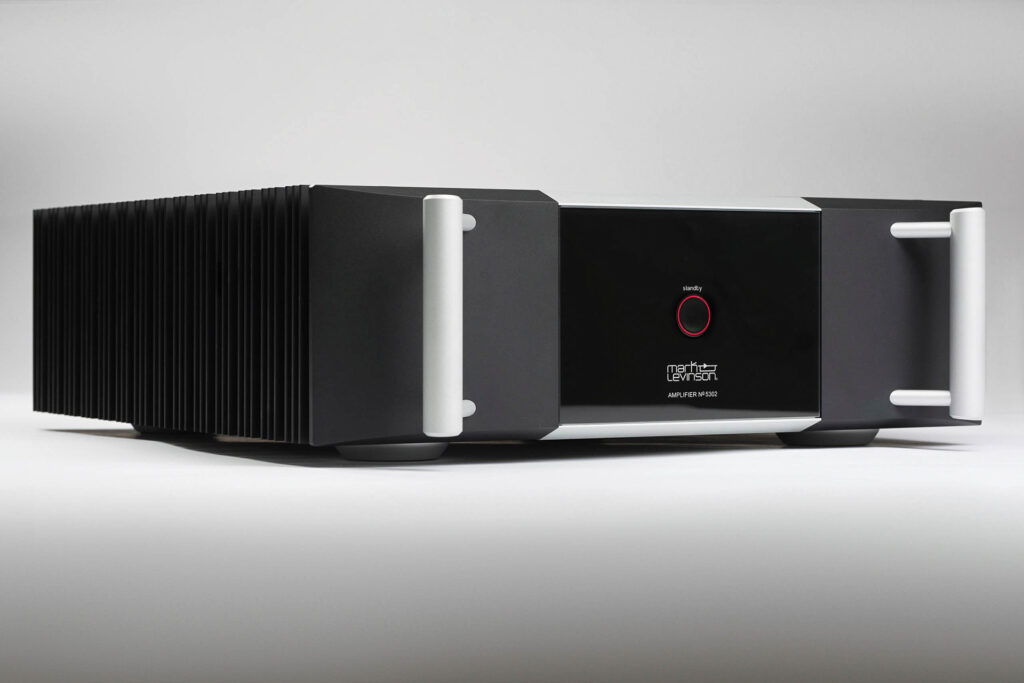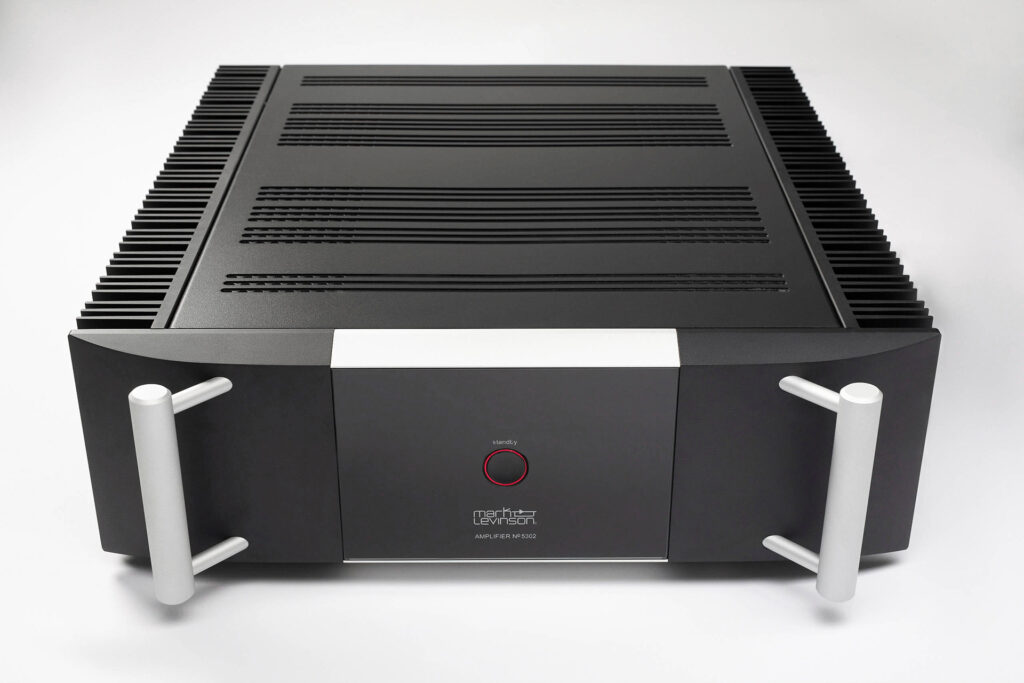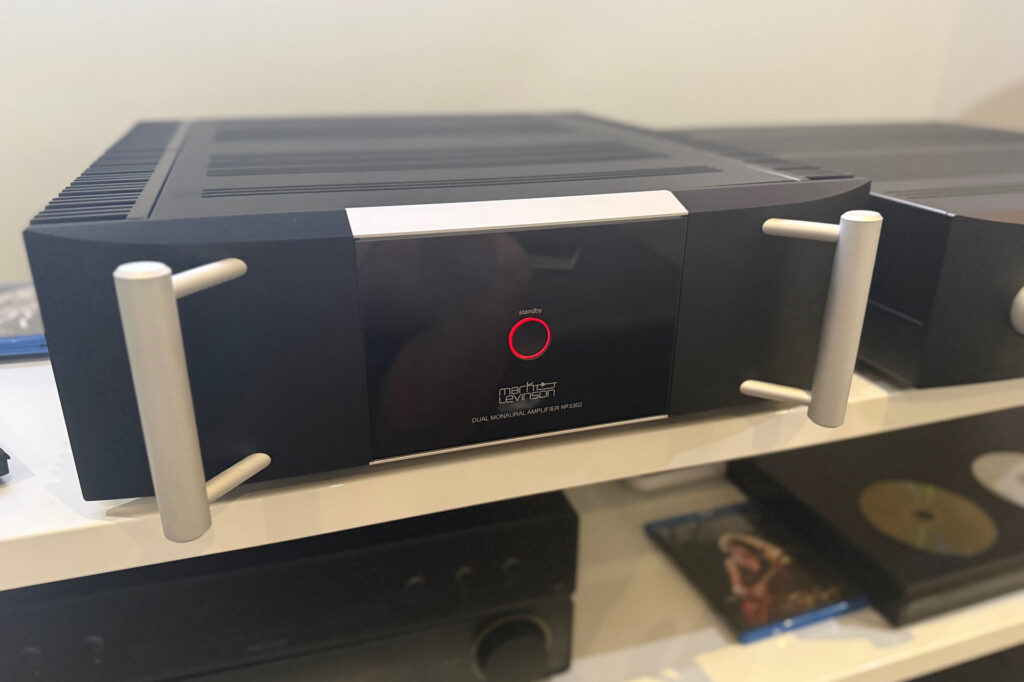There is no single more successful audiophile brand in the business today than Harman’s flagship electronics brand, Mark Levinson. Now, before you click to the next review in anger or disgust, let me explain why. The deal to put Mark Levinson-branded audio into Lexus automobiles was a pure and simple genius move decades ago. Why does Samsung own Harman (parent of Mark Levinson and now many others of the best audiophile brands)? Mainly because Harman is dominant in the automotive audio space, and that market segment is, by far, the most profitable in the specialty audio world. For a generation before this and dating back to the 1980s, Mark Levinson was the most premium of the premium audiophile brands. Other brands have taken over for the big five (McIntosh, Audio Research, Krell, Classé and Mark Levinson) in today’s audiophile landscape, but with Harman’s recent launch of new 600 Series products, there is renewed consumer interest in Mark Levinson gear among many audiophile enthusiasts.
The Mark Levinson No. 5302 power amp is made in the United States, a bridgeable, modestly-sized audiophile power amplifier that is kind to the eye and kinder to the ear. There are few modern speakers that an amplifier like this can’t reasonably drive with accuracy and control, but with Swiss options and semiconductor-based options popping up everywhere, how does a 135-watts-per-channel Mark Levinson present in today’s marketplace? That’s our challenge for this review.

What Makes the Mark Levinson No. 5302 Power Amplifier Special?
- In 2025, audiophile gear made in America isn’t really subject to the Presidentially-imposed audiophile tariffs on a lot of gear made or sourced overseas. The Mark Levinson No. 5302 is a solidly-built, made-in-America amp that hasn’t had absurd price increases that only billionaires can afford. Mark Levinson isn’t the only brand that is somewhat tariff-proof, but it is very worth mentioning.
- The Mark Levinson No. 5302 is a traditional Class-AB power amp, with 135 watts of power into eight-ohm speakers. It goes up to 270 watts into a four-ohm load, which is to be expected from a solid Class-AB amp.
- Bridging the Mark Levinson No. 5302 is a cool upgrade path for those looking into their own audiophile futures. You can add a second Mark Levinson No. 5302 to your first one and bridge them to get 275 watts (reported) into eight-ohm speakers and over 500 watts into four-ohm speakers. That’s a lot of power, and you can build your audiophile powerhouse over time and as your budget allows.
- The build quality of the Mark Levinson No. 5302 is first-rate. While not too heavy at 70 pounds, this slim, three-rack-space-high audiophile power amp is capable of big output from a pretty compact form factor for a more traditional audiophile power amp. The glass front plate looks elegant and the front aluminum handles are more useful than you might expect when setting up a Mark Levinson No. 5302.
- The Mark Levinson No. 5302 offers both balanced (XLR) and unbalanced connections (RCA), as should be expected at these prices. We’ve had an internal debate about audiophile components that offer XLR connections but not truly balanced performance. That’s normal on lower-priced gear, but that isn’t the case here, as Mark Levinson products are fully balanced in terms of their design.
- A USB-A port is offered for firmware updates. USB-A seems a little dated, in that my beloved Mark Levinson No. 5909 headphones (read my review) connect via USB-C like every other device in my technological world. Nevertheless, it is good to have a way to update your technology over the years.
- A five-year warranty is included with the Mark Levinson No. 5302, which is pretty solid by industry standards. Nobody beats Bryston on this front, but five years is a good amount of time to have the factory behind your amp that, respectfully, is unlikely to ever break.
Why Should You Care About the Mark Levinson No. 5302 Amp?
The audiophile who buys a Mark Levinson No. 5302 is looking for solid power, with that dynamic control over his or her speakers that you only get from the best, most responsive power amps. This same audiophile isn’t really interested in physically huge, hot, power-consuming and labor-intensive components. Something a little bit more compact looks good in the rack and sounds even better in the rack. Like McIntosh for the generation before, Mark Levinson gear pulls at the heartstrings of audiophiles worldwide, and for good reason. This is a legendary, iconic power amp, and that counts for a lot when it comes time to actually cut a check on an upgrade.

Some Things You Might Not Like About the Mark Levinson No. 5302 Power Amp
- The heatsinks are a throwback to a bygone era, like a tailpipe on an EV. This sexy-looking metal work is rough to the touch and clunky overall, even if it is audiophile eye candy.
- The red light on the front of the Mark Levinson No. 5302 is piercing in a darkened room. Unlike a McIntosh or Pass Labs or other competing amp that packs cool-AF gauges, the red light on the Mark Levinson No. 5302 is iconic, but also sticks out when listening in a darkened room. Being able to change the color would be a welcome upgrade.
- The Mark Levinson No. 5302 is a very good example of a classic audiophile amplifier design. What the Mark Levinson No. 5302 is not is a semiconductor-based, modern Class-D amp that has that heat-creating and power-consuming Class-A sound but without the downside. This is more of an AMG Mercedes with an internal combustion engine versus an EV.
Listening to the Mark Levinson No. 5302 Amplifier …
The Mark Levinson No. 5302 that I got to audition was on Bowers & Wilkins 802 D4 speakers,which are my reference. I was able to use a Bricasti M3 DAC, as well as a killer CHI-FI Topping D90 III, all being fed by a Bluesound Node 2024 streamer. I had an SVS SB-4000 sub at my disposal, but most of my listening was in two-channel, not 2.1.
I sold enough Mark Levinson in the early 1990s while in college to get Mr. Levinson and his partner Joe Cali to hire me to work for them at Cello. One song that I loved to play for consumers in 1993 at Christopher Hansen Ltd., a famous audiophile salon formerly in Beverly Hills, was Rickie Lee Jones’ cover of Jimi Hendrix’s “Up From the Skies” from her Pop-Pop – a sultry, jazzy cover record. On the most familiar of speakers, I was really impressed by the forward presentation of Jones’ vocals well out in front of the speakers. The walking bassline of the stand-up bass was tight-sounding and controls. There was an openness that I really liked with the Mark Levinson No. 5302 in the loop, more than, say, much bigger and much more expensive solid state McIntosh amps.
Getting into something even more funky, I cued up “Handcuffs” from Parliament’s Mothership Connection – an album that would ultimately be the musical core of 1990s hip-hop (just ask Snoop or Dre), but is really a better album on its own merits from the 1970s funk-soul world. The beamingly gorgeous horns in the chorus jumped out in front of the Bowers & Wilkins 802 D4s again, as did Jones did when ambitiously covering Hendrix. The song was so funky that not only did Bootsy Collins play on the track, but so did a second bass player, Boogie Mosson. Much like many movies of the past, the lyrical content of the song is a little bit outdated for a much more “woke” society, but I still think the song is a jam nonetheless. The bass had a grungy yet funky vibe that made it a pleasure to listen to on the Mark Levinson No. 5302 power amp.
Since we went with one Hendrix cover in this review (most artists can’t dream of covering Hendrix, while Jimi could cover anything he wanted), why not go to the well again with the most bombastic, over-the-top and brutally demanding track that I’ve heard in years, which is Tom Morello’s cover of “Voodoo Chile”? OMG, just for the record. The track starts by lulling you to sleep a little musically with the melodic opening in a masked, veiled introduction that is anything but audiophile-grade. Just wait, friends … just wait. By the first chorus, the instrumental cover of Hendrix’s arguably most iconic song and/or melody explodes into a cacophony of sound that can make a more mortal amp roll over and die. How did the Mark Levinson No. 5302 do when pushed to levels where paint chips might have been falling from the ceiling? The Mark Levinson No. 5302 absolutely rocked it with a level of coherence that was world-class. Morello’s effects-laden guitar was the star of the track, but the overall instrumentation was presented in a quite controlled but fully bombastic way. One thing we like to say around here is “you won’t read that in (fill in the name of an establishment audiophile print magazine here)” and Mr. Morello delivers in spaces. You can say the same for the Mark Levinson No. 5302 power amp on the Bowers & Wilkins 802 D4s, which is an ironic speaker/amp pairing, in that Harman just popped for $350,000,000 to buy Bowers & Wilkins along with Polk, Definitive Techology, Denon, Marantz, Classé (out of business, but …).
Will the Mark Levinson No. 5302 Power Amp Hold Its Value?
The Mark Levinson No. 5302 is fairly priced at $7,000 and not subject to tariffs, which could make its price skyrocket for no good reason. The Mark Levinson brand is still quite sought-after in audiophile circles and, while there is a lot of it in the used market, it still does really well. Mark Levinson has had its fair share of distribution issues in the past decade, but being sold at Magnolia AV helps. Fractionally, the Lexus deal doesn’t hurt, but I have never been convinced of a direct correlation between Mark Levinson customers (audiophile component ones) and the luxury Japanese car brand. With all of that said, your money is pretty damn safe invested in a Mark Levinson No. 5302, especially considering that the upgrade path of bridged Mark Levinson No. 5302 amps will always have somebody looking for a second one to add to their rig.

What is the Competition for the Mark Levinson No. 5302 Power Amp?
If we are going to go iconic, let’s compare the Mark Levinson No. 5302 to one of Nelson Pass’ design. It has been a long, long time since Mr. Levinson had anything to do with his namesake brand, but Mr. Pass is still very involved in his amplifier designs in 2025. The Pass Labs X150.8 is close to the same price at $7,865, and has a similar form factor. Sonically, the Pass Labs X150.8 comes across as a little more open and has perhaps ever-so-incrementally better bass but that very possibly could be recency bias on my part. These amps have about the same output and are about the same size, the same style and the same price, thus the Pass Labs X150.8 is a good, real-world comparable for the Mark Levinson No. 5302 power amp.
I was able to review some Boulder Electronics last year, and their 861 power amp ($9,250) is another good comp for the Mark Levinson No. 5302. The metal work on the also made-in-America, smaller-sized power amp is amazing, as I’ve actually been to the Boulder factory in Colorado. To say that their products are extreme would be to insult their designer (before he insults you, and he’s good at that, actually). The bass control on Boulder amps is incredible and the 866 is no exception. Both the Boulder 861 (read my review here) and the Pass 150.8 are more audiophile jewelry than the Mark Levinson No. 5302, but we don’t listen to the gauges or the super-cool heatsinks, do we?
I’d be remiss if I didn’t put an American-made Class-D power amp in the comparison, and Leo from Orchard Audio has a new set of ultra-premium GaN-FET monoblock amps coming for $7,000 a pair. These limited-edition power amps are dressed in silver and come with 250 to 500 watts per channel. Sonically, they bring the best of Class-A and/or tube amp designs to a “switching” or Class-D amp (learn more here) design. The look and feel of these Orchard amps are upgraded, but they still present as much more of a handmade product than the aforementioned killers. With that said, another friend of mine did the Pepsi Challenge between a really respected Class-A amp and the Orchard monos and the differences are slight, yet the downsides to the other amps are gone with the Orchard amps. There’s a reason why Leo sells out of amps in days of announcing them.
Final Thoughts on the Mark Levinson No. 5302 Power Amp …
Is it fair to say that Mark Levinson is a bit back as an audiophile brand? Cynics say that “McIntosh will just be another car audio brand,” which is what they are saying about McIntosh/Bose (the new owners of McIntosh). Mark Levinson headphones are really great and well worth the $999, but that’s not enough reason to invest in a Mark Levinson No. 5302. The reason to invest in a Mark Levinson No. 5302 is the sound, the legacy, the design, the slim footprint and the upgradability. And that is just for starters.
You can power pretty much any speakers you can think of in the world today with a Mark Levinson No. 5302. With modest heat output but plenty of power output, the Mark Levinson No. 5302 is able to live in an equipment rack without causing issues with other heat-sensitive components.
Sonically, the Mark Levinson No. 5302 gets you a very controlled, very open-sounding and overall powerful stereo power amp that can rock for you on nearly any speaker you put it on. Many people dream of owning a Mark Levinson amp, and the Mark No. 5302 is a modern-day reason for them to park a Levinson amp between their favorite speakers.



